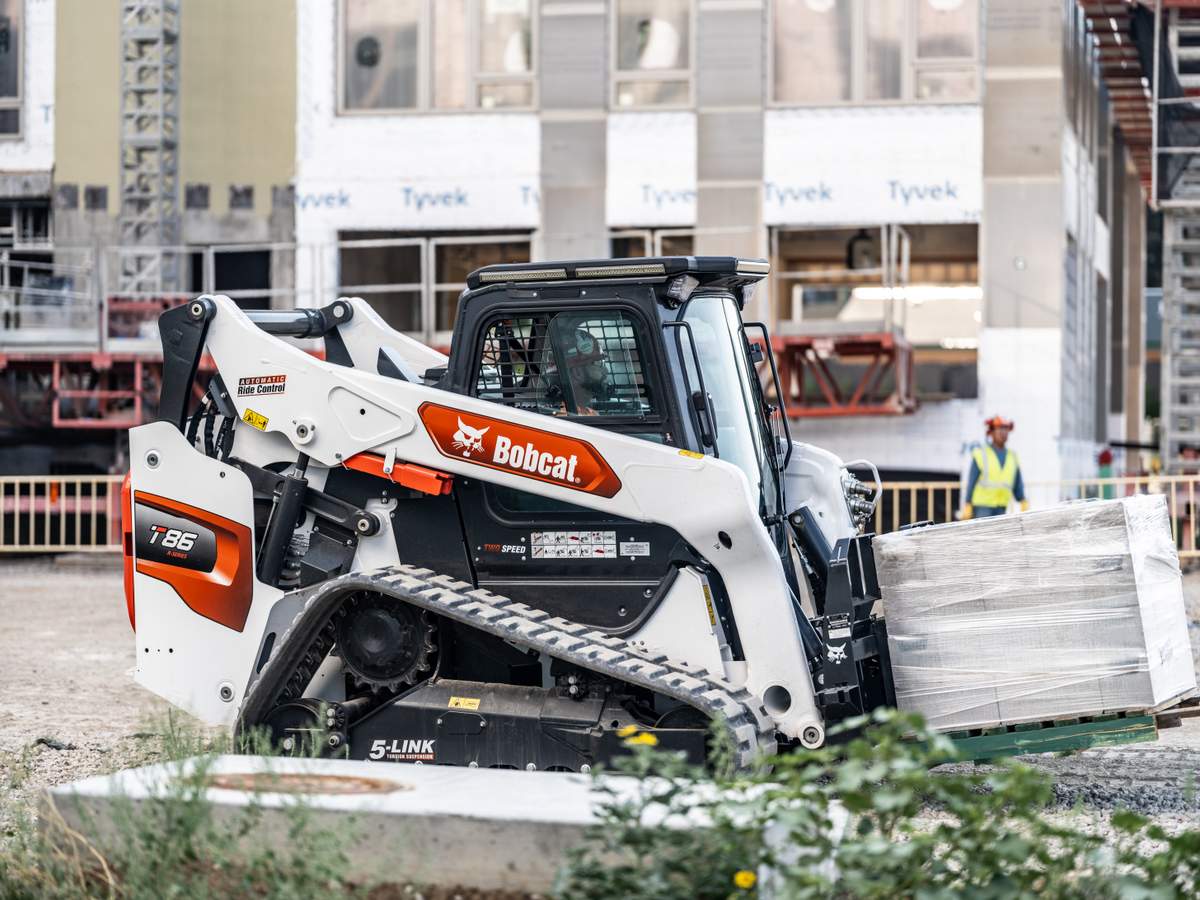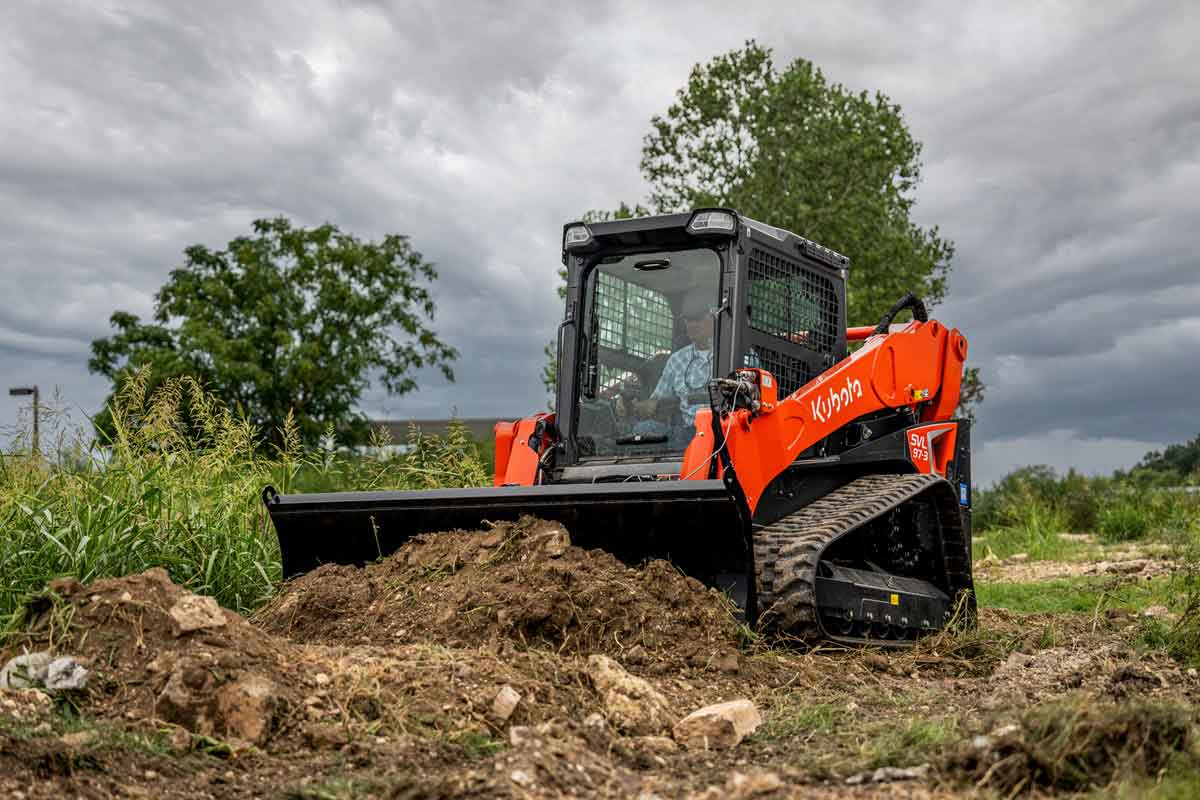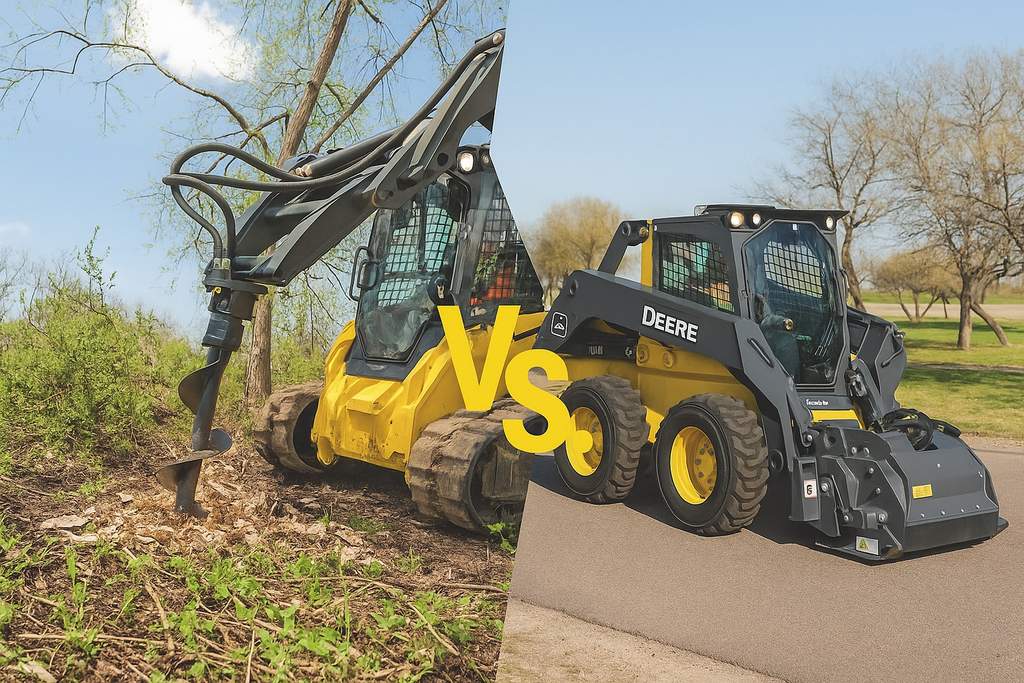Top 5 ag attachments for skid steers and track loaders
When it comes to versatility, it’s hard to beat a skid steer or a compact track loader. For years, farmers and ranchers have found skid steers to be a particularly valuable machine to have around.
“Due to their compact size, skid steers and compact track loaders have always been popular on the farm,” says John Sketchley, regional business manager for JCB North America. “Because so many different attachments are available for these machines, they’re ideal for the type of multi-purpose use common to just about any agricultural application.”
Sketchley says that JCB’s most popular units sold into the agriculture market are its 155, 225 and 260 models, which offer rated operating capacities (ROC) of 1,550 lbs, 2,250 lbs and 2,600 lbs, respectively. Most of those machines are purchased by dairy and cash crop farmers. They’re large enough to offer impressive power, but small enough to get around inside livestock yards, barns and other outbuildings.
“In colder climates at this time of year, farmers and ranchers can use their machines for snow clearing by simply purchasing a snow blade or bucket,” Sketchley says. “Cash crop farmers like to use them to clear areas around sheds; livestock or dairy farmers might use them for feeding and scraping. Skid steers come in handy as a general maintenance tool on any farm.”
Versatile Attachments for Agriculture
Obviously, attachments are what give skid steers and compact track loaders much of their versatility. The number of attachments available for these machines is considerable and growing every year. Right now, JCB offers more 30 attachment families for use with skid steers and compact track loaders. Sketchley says that manufacturers determine what attachments to offer its customers by going into the marketplace and seeing how customers are using their machines — and how they’d like to be using them.
Sketchley cites five particular attachments as being the top five most demanded attachments in the agriculture market.
1. General Purpose Bucket: A general purpose bucket offers a higher tear-out force thanks to its shorter toe plate or shorter bottom plate. This type of bucket is useful for loading sand, gravel or other heavier materials that require more of a prying effort to pick up and lift. Buckets are always popular, as anyone who purchases a new machine gets a bucket.
2. Bale Spear: A bale spear does just what it says. The spear goes into a bale of hay or straw and makes it possible to carry it from Point A to Point B or lift it onto a truck or other vehicle for transport. Sketchley recommends an attachment with a longer fender spear that will pierce a bale at least three quarters of the way through.
3. Manure Forks: A manure fork with a grapple, or a sort of overhead clamp, is ideal for handling manure and hay, as well as clearing up brush and limbs around the farm. The grapple reduces the opportunity for spillage by gripping the materials.
4. Silage Defacer: Silage defacers loosen and remove compacted silage from silos or bunkers while still maintaining a smooth compacted face to reduce the possibility of spoilage. The cutting action of the defacer maintains the silage’s original cut length.
5. Slurry Bucket: This attachment is particularly useful at dairy farms where farmers need to be able to remove wet manure, scooping it along to where it can be disposed of in a lagoon.
Options and Advice
Regardless of the type of attachments a farmer or rancher chooses, there are certain skid steer or compact track loader options that make using those attachments easier and more productive. Because contractors will usually find numerous ways to use a skid steer or compact track loader, they should also consider machines that have a universal quick-hitch with standard-flow auxiliaries. This will make it much easier and faster to connect and disconnect multiple attachments. A “Smooth Ride System,” or SRS, is also ideal when using attachments to carry materials over rough pastures or other ground as it makes it easier to retain the load.
Sketchley also says that customers who are replacing an existing machine should consider “refreshing” some of their current attachments. Attachments endure a great deal of wear and tear because they come into direct contact with all kinds of potentially damaging surfaces. That’s also why it’s imperative to maintain attachments impeccably to get the most productivity and longest use from them.
“It’s also very important to match your attachment to the size of your machine,” Sketchley says. “You don’t want an attachment that’s too wide to fit on a small platform machine, for example. Larger machines can handle wider attachments. I recommend that customers in any industry who are purchasing a new skid steer figure out what attachments they want to purchase and use with their machines, right up front. That way, they can make sure they’re purchasing the right size machine for the tasks they need to tackle on a regular basis.”
Lynette Von Minden is senior public relations counsel for Swanson Russell, based in Lincoln, Neb.




